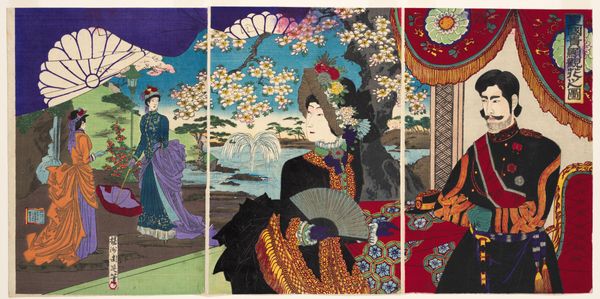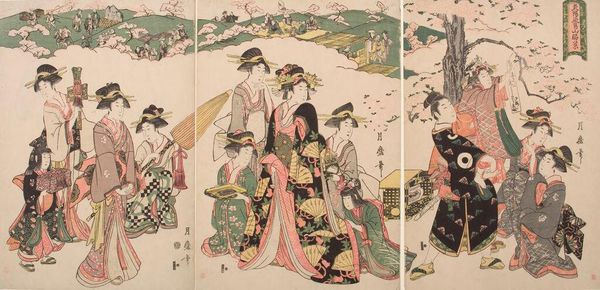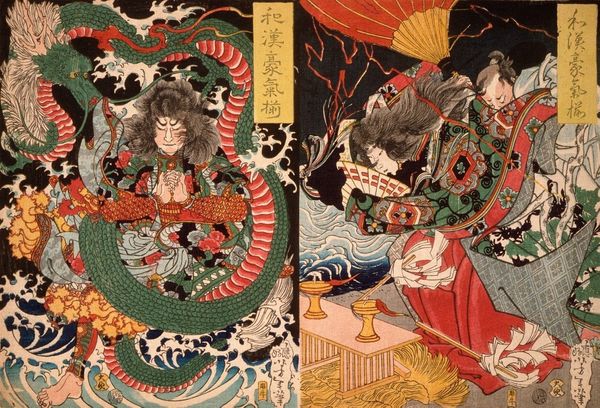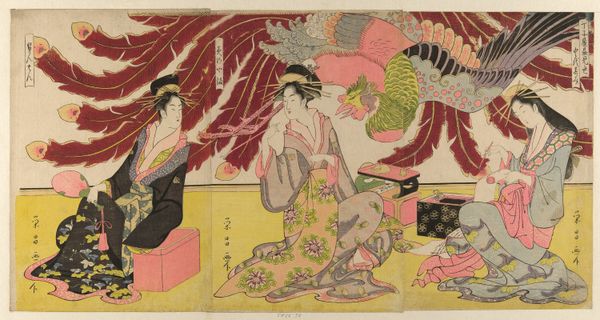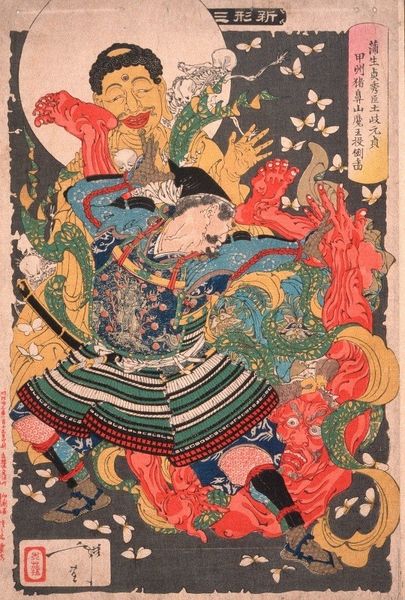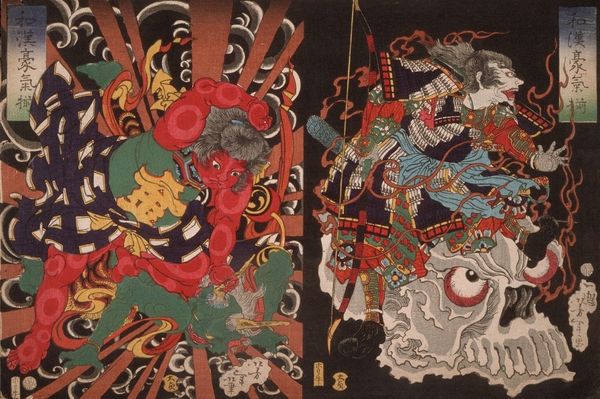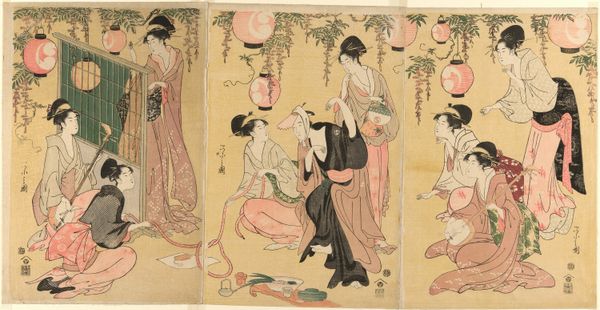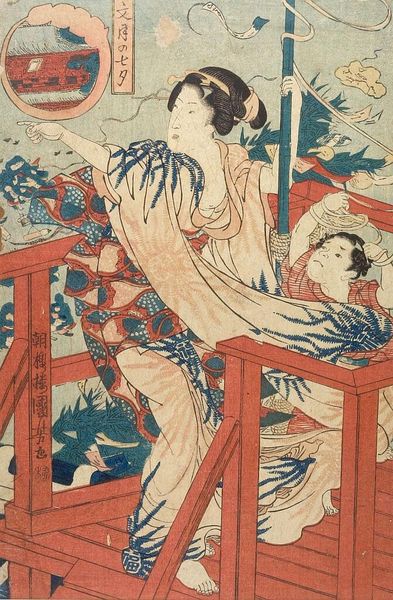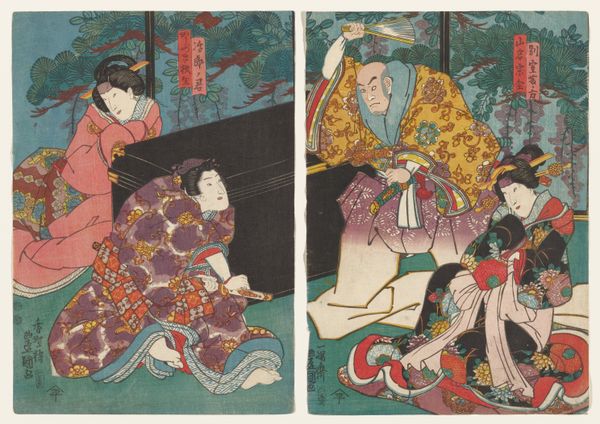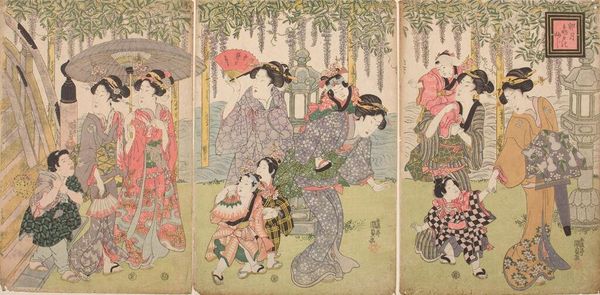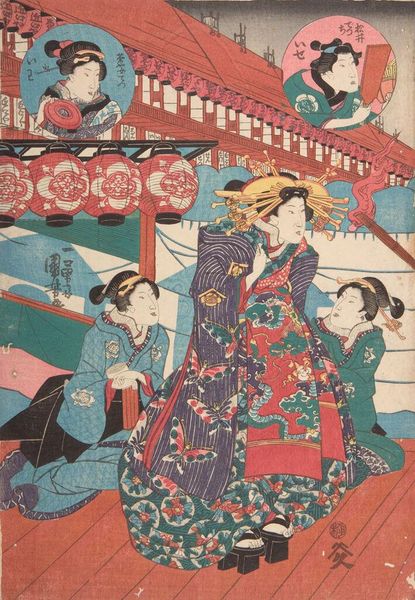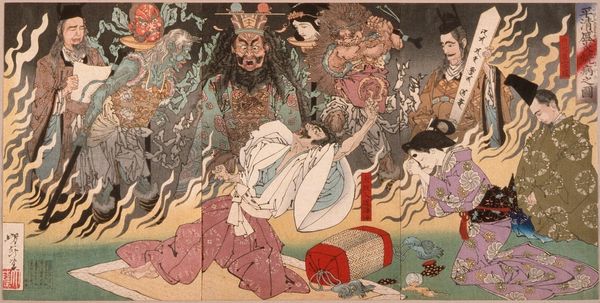
print, woodblock-print
#
narrative-art
# print
#
asian-art
#
ukiyo-e
#
figuration
#
woodblock-print
Copyright: Public Domain: Artvee
Editor: This is Tsukioka Yoshitoshi's diptych woodblock print, *Seigen and Sakurahime; Angel with Two Children,* from 1868. It's striking how different the two panels feel—the left panel seems dark and violent, and the other is full of light and joy. How do you interpret this work? Curator: This diptych beautifully encapsulates the social and political turbulence of the late Edo and early Meiji periods in Japan. Yoshitoshi uses the *ukiyo-e* tradition to explore themes of transformation and societal upheaval. Editor: Transformation? In what sense? Curator: Look at the juxtaposition of the two panels. The left likely depicts a scene from a kabuki play – a tale of betrayal and violence reflecting anxieties of the time. And then, the right panel presents this idealized image with heavenly figures, signaling hope for a new era and perhaps a critique of previous structures. How do these contrasting scenes make you feel in relation to the political landscape? Editor: It's like Yoshitoshi is suggesting that the old and new exist simultaneously. There's something unnerving, but also hopeful, about that. I hadn’t thought about it as directly engaging with socio-political issues before, I was just reading the image from an aesthetic and art historical point of view! Curator: Precisely. His choice to depict these contrasting realities speaks volumes about his awareness of the profound shifts happening in society and the potential for both destruction and creation, reflecting a duality present in much art created during times of reformation. Thinking about identity politics at this period, can we even say this art could have spurred on societal reformation itself? Editor: Absolutely! Thanks, it really changes how I see the piece when you put it in the context of its tumultuous time and through a socio-political lens. It is not simply aesthetic in its creation, but is advocating and spurring an idea. Curator: It is the social fabric within the artistic tradition and political time! Art reflects and shapes the narratives we live by.
Comments
No comments
Be the first to comment and join the conversation on the ultimate creative platform.
